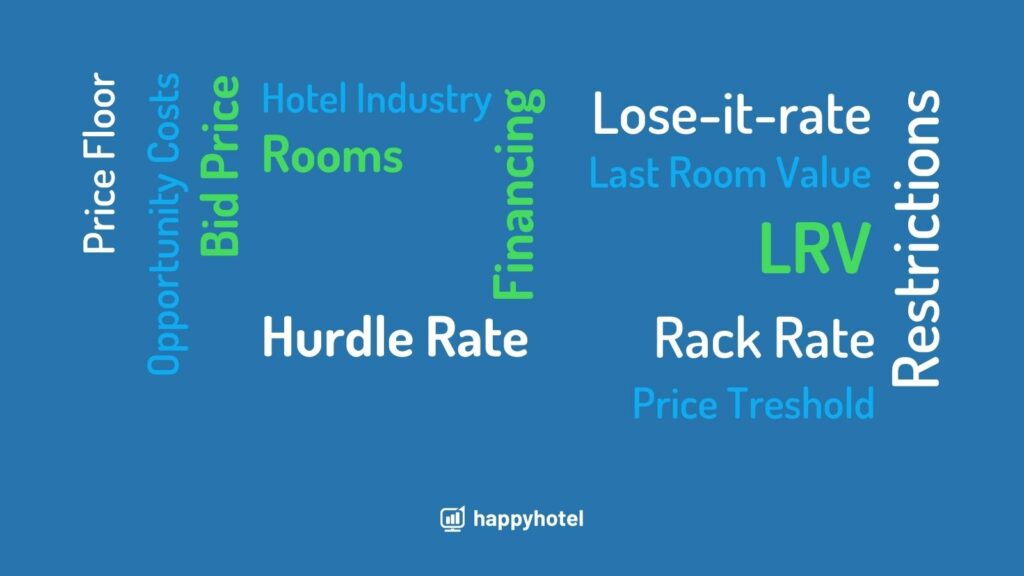Have you come across the term “hurdle rate” from time to time? We have too. The word itself and the concept behind it are not always used consistently. Therefore, we would like to give you an overview.
- Definition of Hurdle Rate
- How is hurdle rate used in the hotel industry?
- Related terms to Hurdle Rate
- How is the price threshold calculated?
Definition of Hurdle Rate
The term originates from Financing, where it describes the imputed basic interest rate or minimum return for investors. It is defined by the return expectations of these investors or the management.
In the case of financial projects, the hurdle rate is the appropriate compensation for the existing risk. As a rule, higher-risk projects have higher price hurdles than lower-risk projects.
In the context of revenue management for the hotel industry, the hurdle rate is the lowest acceptable room price for a given date.
How is the price hurdle rate used in the hotel industry?
The hurdle ate is the level at which it becomes profitable for a hotel to sell a room on a given date or in a given time period. Consequently, below this rate, it makes more sense for the hotelier or channel manager to leave the room vacant. This price hurdle is thus a tool to achieve high profitability.
In other words, hurdle rates are like restrictions. This is because rooms can only be booked if their price is greater than/equal to this rate. This, of course, applies to direct bookings as well as OTAs.
Related terms to Hurdle Rate
The term itself has so many synonyms and aliases that we’d like to list some for you here.

Bid price and Last Room Value (LRV) are used as synonyms. This is especially the case in some software solutions.
In terms of group bookings, “Lose-it-Rate” is a synonym. Accordingly, it refers to the minimum price below which a group booking should no longer be accepted for certain rooms and dates.
Opportunity costs are a related term. In classical business economics, it does not refer to real costs, but rather to lost profit that is foregone or incurred to a lesser extent when deciding on one of several alternatives.
The counterpart is the rack rate: the highest price paid by a guest for a room. A room cannot be sold for more than its rack rate. Generally, rack rates are offered to walk-in guests and can change daily.
There are differences at the price floor. This is because the hurdle rate is seen for a specific day or period. In addition, it depends on the booking situation in general. On the other hand, the price floor is best calculated per room category. It is always valid, regardless of the date or booking period.
How is the price threshold calculated?
There is no generally applicable formula for calculating it outside of a revenue management system. On top of that, the rate is not an explicit price, but more of a “hurdle”. For this, many conditions are included: What is the occupancy rate on this date or during this period? How is the booking made – via an OTA or directly? How long will the guest stay?
Furthermore, it depends on which concepts the hotel generally applies with regard to pricing. For example, the BAR method should be mentioned here, the Best Available Rate.
But what is generally valid and important for the Hurdle Rate: It is always the total value of a booking that counts.
You can find an example in the following video.
